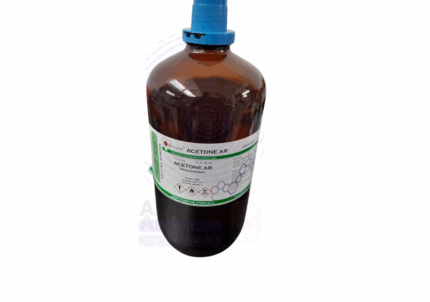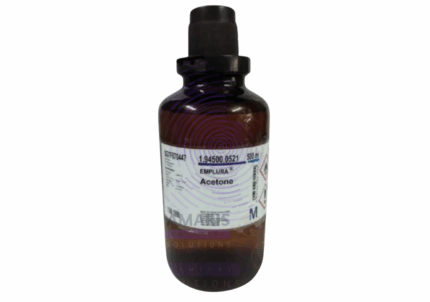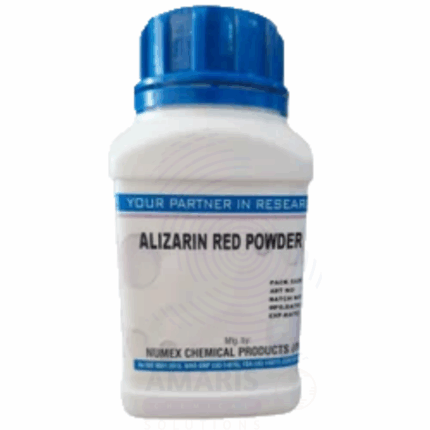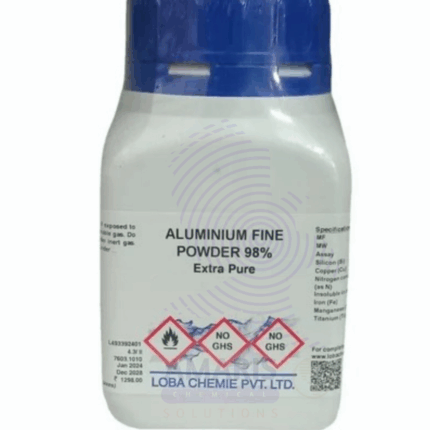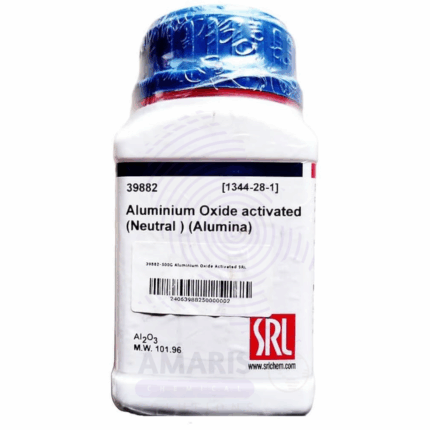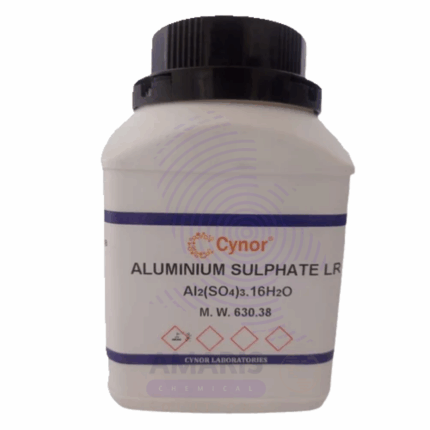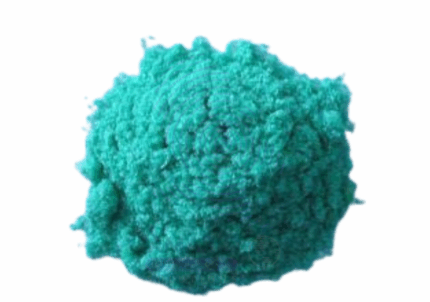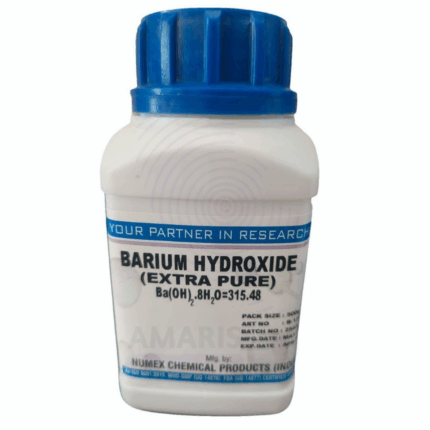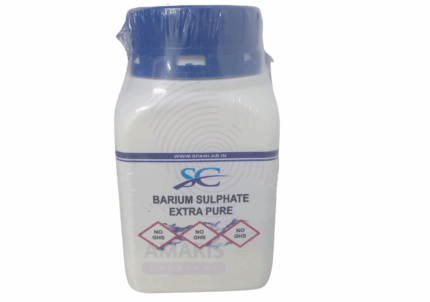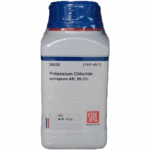

Potassium Chromate Extra Pure
$ 17.20
Potassium Chromate Extra Pure is a high-purity, bright yellow crystalline compound known for its reliability in precise laboratory analyses. It is commonly used as an indicator in argentometric titrations, particularly for the detection of chloride ions in solution. Its strong oxidizing nature also makes it valuable in various industrial processes, including metal passivation, pigment manufacturing, and dyeing applications. In educational and research laboratories, it serves as a dependable reagent for redox reactions and chemical demonstrations. Given its toxicity and environmental hazards, it should be stored securely and handled using proper protective equipment to ensure safety and compliance with regulatory standards.
Potassium Chromate Extra Pure
PRIMARY USES
- Analytical Chemistry:
- Used as a reagent in titration, especially for detecting chloride ions using the Mohr method.
- Acts as an oxidizing agent and indicator in redox and precipitation reactions.
- Laboratory Reagent:
- Used for preparing chromate-based solutions and standard reference materials.
- A common source of chromate ions (CrO₄²⁻) for synthesis and research.
- Pigment Manufacturing:
- Serves as a precursor in producing yellow pigments and anti-corrosion coatings.
SECONDARY USES
- Textile & Dye Industry:
- Involved in dye mordanting processes to help fix dyes to fibers.
- Glass & Ceramic Manufacturing:
- Contributes to the coloration of glass and glazes in decorative ceramics.
- Corrosion Inhibition:
- Used in chromate conversion coatings for metal surface treatment (especially aluminum).
1. Basic Identification Attributes
- Chemical Name: Potassium Chromate
- CAS Number: 7789-00-6
- HS Code: 2841.50.00
- Molecular Formula: K₂CrO₄
- Synonyms:
- Dipotassium chromate
- Chromic acid, dipotassium salt
- Yellow potassium chromate
2. Physical & Chemical Properties
- Physical State: Solid (crystalline powder)
- Color & Odor: Bright yellow, odorless
- Boiling Point & Melting Point:
- Melting Point: ~975 °C (decomposes)
- Boiling Point: Not applicable (decomposes before boiling)
- Density/Specific Gravity: ~2.73 g/cm³
- Solubility:
- Soluble in water (~62 g/L at 20 °C)
- Insoluble in alcohol
- pH Level: Alkaline (~8.6 in aqueous solution)
- Vapor Pressure & Volatility: Negligible vapor pressure
- Flash Point: Not flammable
- Autoignition Temperature: Not applicable
- Viscosity: Not applicable
3. Safety & Hazard Attributes
- Hazard Class (GHS Classification):
- Oxidizing, Carcinogenic, Toxic, Environmentally Hazardous
- NFPA Ratings:
- Health: 3
- Flammability: 0
- Reactivity: 1
- Exposure Limits:
- OSHA PEL (as Cr(VI)): 0.005 mg/m³ (TWA)
- ACGIH TLV: 0.05 mg/m³ (as Cr)
- Reactivity:
- Incompatible with reducing agents, organic materials, strong acids
- Reacts with acids to produce toxic chromium compounds
4. Storage & Handling Attributes
- Storage Conditions:
- Store in a cool, dry, well-ventilated area away from light and reducing agents
- Incompatible Materials:
- Organic substances, acids, reducing agents, combustible materials
- Container Type:
- Corrosion-resistant sealed containers (e.g., glass or HDPE)
- Shelf Life & Expiration Date:
- Stable under recommended conditions; check regulatory expiration guidance
- Special Handling Requirements:
- Use in fume hood
- Wear chemical-resistant gloves, goggles, lab coat, and appropriate respiratory protection
5. Regulatory & Compliance Attributes
- Regulatory Status:
- REACH Registered, OSHA regulated (Cr VI compound)
- Listed by IARC as Group 1 Carcinogen
- Subject to SARA Title III, TSCA, RCRA
- Transportation Restrictions:
- UN Number: UN 3288
- Hazard Class: 6.1 (Toxic substances)
- Waste Disposal Method:
- Dispose as hazardous waste per EPA and RCRA guidelines
- Use licensed chemical waste disposal contractor
6. Environmental & Health Impact
- Ecotoxicity:
- Highly toxic to aquatic life (LC50 < 1 mg/L for fish and invertebrates)
- Persistence in Environment:
- Persistent and non-biodegradable; Cr(VI) form is environmentally mobile
- Carcinogenicity/Mutagenicity:
- Known human carcinogen (IARC Group 1)
- Mutagenic and teratogenic risks with chronic exposure
- Biodegradability:
- Not biodegradable; requires chemical reduction to Cr(III) for detoxification
SAFETY PRECAUTIONS
Personal Protective Equipment (PPE):
- Wear chemical-resistant gloves (nitrile or butyl rubber).
- Use tightly fitting safety goggles or a face shield.
- Lab coat with full coverage is essential.
- Use a dust mask or respirator if ventilation is insufficient.
- Handle in a fume hood due to toxic and carcinogenic properties.
Handling:
- Avoid all contact with skin, eyes, and clothing.
- Do not breathe dust.
- Do not ingest.
- Handle with extreme care due to its oxidizing and carcinogenic nature.
- Use only in well-ventilated areas.
Storage:
- Store in a tightly closed, corrosion-resistant container.
- Keep in a cool, dry, and well-ventilated location.
- Store away from combustible materials and reducing agents.
FIRST AID MEASURES
Inhalation:
- Move the exposed person to fresh air immediately.
- Seek urgent medical attention.
- If not breathing, give artificial respiration.
Skin Contact:
- Immediately wash skin with soap and water for at least 15 minutes.
- Remove contaminated clothing.
- Seek immediate medical assistance.
Eye Contact:
- Rinse cautiously with water for 15–20 minutes.
- Lift eyelids occasionally.
- Get medical help without delay.
Ingestion:
- Do not induce vomiting.
- Rinse mouth with water.
- Seek emergency medical care immediately.
FIRE FIGHTING MEASURES
Flammability:
- Not flammable, but a powerful oxidizer—enhances the burning of other materials.
Extinguishing Media:
- Use water spray, foam, dry chemical, or CO₂ depending on the surrounding fire.
Hazardous Combustion Products:
- Emits toxic fumes including chromium oxides and potassium oxides when heated.
Firefighter Protection:
- Full protective gear and self-contained breathing apparatus (SCBA) required.
- Keep containers cool with water spray.
- Avoid breathing vapors or dust during fire.


 Preservatives(food)
Preservatives(food) Flavor Enhancers
Flavor Enhancers Acidulants
Acidulants Sweeteners
Sweeteners Antioxidants
Antioxidants Colorants(food)
Colorants(food) Nutraceutical Ingredients (food)
Nutraceutical Ingredients (food) Nutrient Supplements
Nutrient Supplements Emulsifiers
Emulsifiers
 Collectors
Collectors Dust Suppressants
Dust Suppressants Explosives and Blasting Agents
Explosives and Blasting Agents Flocculants and Coagulants
Flocculants and Coagulants Frothers
Frothers Leaching Agents
Leaching Agents pH Modifiers
pH Modifiers Precious Metal Extraction Agents
Precious Metal Extraction Agents
 Antioxidants(plastic)
Antioxidants(plastic) Colorants (Pigments, Dyes)
Colorants (Pigments, Dyes) Fillers and Reinforcements
Fillers and Reinforcements Flame Retardants
Flame Retardants Monomers
Monomers Plasticizers
Plasticizers Polymerization Initiators
Polymerization Initiators Stabilizers (UV, Heat)
Stabilizers (UV, Heat)
 Antifoaming Agents
Antifoaming Agents Chelating Agents
Chelating Agents Coagulants and Flocculants
Coagulants and Flocculants Corrosion Inhibitors
Corrosion Inhibitors Disinfectants and Biocides
Disinfectants and Biocides Oxidizing Agents
Oxidizing Agents pH Adjusters
pH Adjusters Scale Inhibitors( water)
Scale Inhibitors( water)
 Antioxidants(cosmetic)
Antioxidants(cosmetic) Emollients
Emollients Fragrances and Essential Oils
Fragrances and Essential Oils Humectants
Humectants Preservatives
Preservatives Surfactants(cosmetic)
Surfactants(cosmetic) Thickeners
Thickeners UV Filters
UV Filters
 Fertilizers
Fertilizers Soil Conditioners
Soil Conditioners Plant Growth Regulators
Plant Growth Regulators Animal Feed Additives
Animal Feed Additives Biostimulants
Biostimulants Pesticides (Herbicides, Insecticides, Fungicides)
Pesticides (Herbicides, Insecticides, Fungicides)
 Active Pharmaceutical Ingredients (APIs)
Active Pharmaceutical Ingredients (APIs) Excipients
Excipients Solvents(pharmaceutical)
Solvents(pharmaceutical) Antibiotics
Antibiotics Antiseptics and Disinfectants
Antiseptics and Disinfectants Vaccine Adjuvants
Vaccine Adjuvants Nutraceutical Ingredients (pharmaceutical)
Nutraceutical Ingredients (pharmaceutical) Analgesics & Antipyretics
Analgesics & Antipyretics
 Analytical Reagents
Analytical Reagents Solvents(lab)
Solvents(lab) Chromatography Chemicals
Chromatography Chemicals Spectroscopy Reagents
Spectroscopy Reagents microbiology-and-cell-culture-reagents
microbiology-and-cell-culture-reagents Molecular Biology Reagents
Molecular Biology Reagents Biochemical Reagents
Biochemical Reagents Inorganic and Organic Standards
Inorganic and Organic Standards Laboratory Safety Chemicals
Laboratory Safety Chemicals Specialty Laboratory Chemicals(Special Laboratory Equipment)
Specialty Laboratory Chemicals(Special Laboratory Equipment)
 Demulsifiers
Demulsifiers Hydraulic Fracturing Fluids
Hydraulic Fracturing Fluids Scale Inhibitors(oil)
Scale Inhibitors(oil) Surfactants(oil)
Surfactants(oil) Drilling Fluids
Drilling Fluids
 Dyes and Pigments
Dyes and Pigments Bleaching Agents
Bleaching Agents Softening Agents
Softening Agents Finishing Agents
Finishing Agents Antistatic Agents
Antistatic Agents
 Admixtures
Admixtures Waterproofing Agents
Waterproofing Agents Sealants and Adhesives
Sealants and Adhesives Curing Compounds
Curing Compounds Concrete Repair Chemicals
Concrete Repair Chemicals Anti-Corrosion Coatings
Anti-Corrosion Coatings
 Surfactants(cleaning)
Surfactants(cleaning) Builders
Builders Enzymes
Enzymes Solvents (Cleaning)
Solvents (Cleaning) Fragrances
Fragrances
 Electronic Chemicals
Electronic Chemicals Catalysts
Catalysts Lubricants
Lubricants Photographic Chemicals
Photographic Chemicals Refrigerants
Refrigerants Automotive chemicals
Automotive chemicals Pyrotechnic Chemicals
Pyrotechnic Chemicals
 Biodegradable Surfactants
Biodegradable Surfactants Bio-based Solvents
Bio-based Solvents Renewable Polymers
Renewable Polymers Carbon Capture Chemicals
Carbon Capture Chemicals Wastewater Treatment Chemicals
Wastewater Treatment Chemicals
 Pigments
Pigments Solvents(paint)
Solvents(paint) Specialty Coatings
Specialty Coatings Binders/Resins
Binders/Resins Additives
Additives Driers
Driers Anti-Corrosion Agents
Anti-Corrosion Agents Functional Coatings
Functional Coatings Application-Specific Coatings
Application-Specific Coatings
 Fresh Herbs
Fresh Herbs Ground Spices
Ground Spices Whole Spices
Whole Spices Spice Blends
Spice Blends Dried Herbs
Dried Herbs
 Leavening Agents
Leavening Agents Dough Conditioners
Dough Conditioners Flour Treatments
Flour Treatments Fat Replacers
Fat Replacers Decoratives
Decoratives Preservatives(baking)
Preservatives(baking)
 Plasticizers & Softeners
Plasticizers & Softeners Reinforcing Agents
Reinforcing Agents Adhesion Promoters
Adhesion Promoters Vulcanizing Agents
Vulcanizing Agents Antidegradants
Antidegradants Blowing Agents
Blowing Agents Fillers & Extenders
Fillers & Extenders Accelerators & Retarders
Accelerators & Retarders

